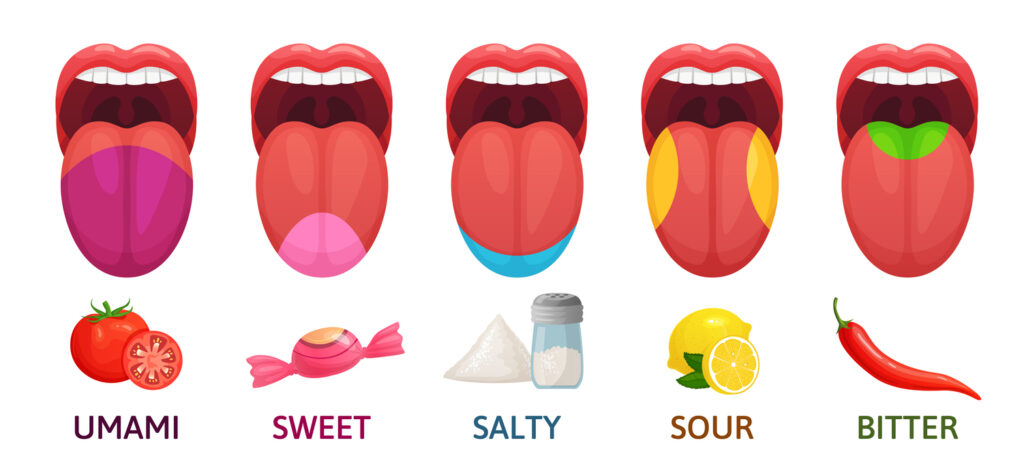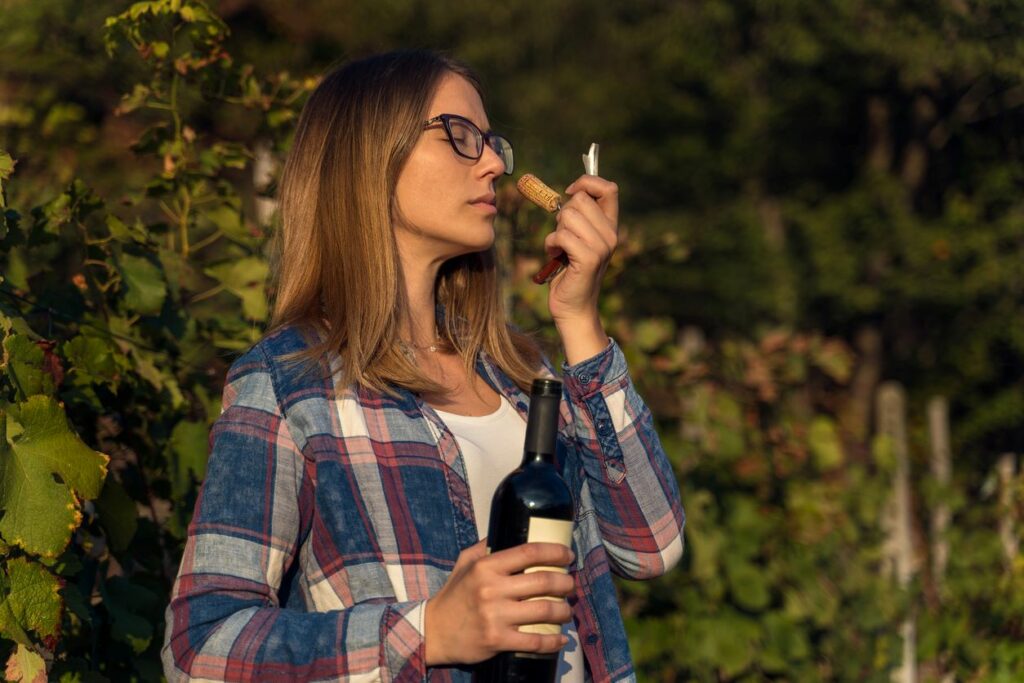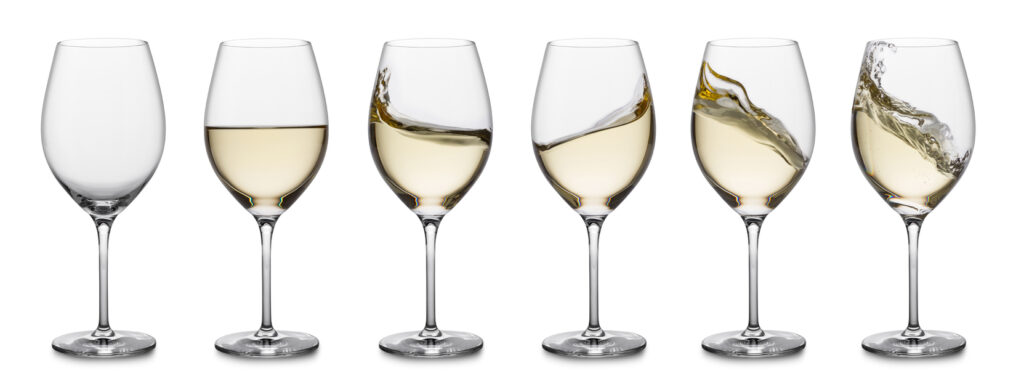Tannins are a class of biomolecules that are commonly found in plants, fruits, and beverages such as tea, coffee, red wine, white wine, and beer. They are known for their astringent taste and ability to bind to proteins, amino acids, and other organic compounds. Tannins are also used in various industrial applications, including the production of leather, ink, and wood adhesives.
Where do tannins in wine come from?
In grapes they can be found in the grape skins, stems and seeds. Extended maceration, the time the grape juice stays in contact with the seeds and grape skins, results in high tannin red wine for longer contact periods and low tannin red wines for shorter periods.
Wines which are stored in oak barrels and especially in young oak barrels take up more tannins from the oak resulting in tannic wines. Older oak barrels have a lower impact on the tannin structure of aged wines.
Depending on the grape variety the grape skins contain higher or lower levels of tannins. This allows you to pick red wines and white wines with more tannins or with less tannins.

Definition
Tannins are a group of phenolic compounds that are produced by plants as a defense mechanism against herbivores and pathogens. The tannin molecules are sequestered in vacuoles within the plant cell, which protects the other cell components. Tannins are classified into two main types: hydrolyzable tannins and condensed tannins.
Hydrolyzable tannins are esters of gallic acid and glucose, while condensed tannins are polymers of flavan-3-ols, also known as proanthocyanidins. Gallotannins and ellagitannins are two other types of tannins that are found in some plants.
Tannic acid is a type of hydrolyzable tannin that is commonly found in oak bark and other plant materials. It is used in the production of leather, ink, and other industrial products.

Historic uses of Tannins
Tannins have been used in the leather industry for centuries. The process of tanning leather involves treating animal hides with tannins to make them more durable and resistant to decay. Tannins can be extracted from a variety of natural sources, including tree bark, leaves, and fruit.
Tannins are also used in dyeing fabrics. They can be used as mordants to help fix dyes to the fabric, or they can be used as a dye themselves. Tannins are particularly useful for dyeing fabrics a range of earthy colors, including brown, tan, and green.
Sources of Tannins
Tannins are a type of polyphenol that are widely distributed in the plant kingdom. They are commonly found in the bark, leaves, stems, fruits, seeds, and roots of plants. In addition, tannins are present in many foods and beverages, including tea, coffee, wine, and certain nuts and fruits.

- Bark: Tannins that become stored in the bark of trees protect the tree from being infected by bacteria or fungi. Some common sources of tannins in bark include oak, willow, and birch.
- Leaves: Many plants contain tannins in their leaves, including tea, coffee, and certain herbs. These tannins help to protect the plant from herbivores and insects.
- Stems: Tannins are also present in the stems of many plants, including grapevines and certain nut trees.
- Fruits and seeds: Tannins are present in the skins and seeds of many fruits, including grapes, pomegranates, and raspberries. They are also present in the seeds of certain nuts, such as chestnuts and acorns.
What Wines Are High in Tannins?
When it comes to tannins in wine, certain varietals stand out for their higher tannin levels. Red wines such as Cabernet Sauvignon, Malbec, and Syrah are known for their robust tannic structure. These wines often exhibit a dry and mouth-drying sensation due to the presence of tannins derived from the grape skins, seeds, and stems during the winemaking process.
Additionally, Italian reds like Barolo and Brunello di Montalcino also boast high tannin content, adding complexity and longevity to these celebrated wines.

White wines which are high in tannins
For those seeking a white wine with noticeable tannins, look no further than skin-contact or orange wines. Made by fermenting white grapes with extended skin contact, these wines develop a rich amber hue and substantial tannic grip on the palate.
Varietals like Pinot Gris and Chardonnay have been used to produce skin-contact wines that offer a unique textural experience coupled with pronounced tannin presence rarely found in traditional white wines. Understanding which wines are high in tannins can enhance your appreciation of different varietals and provide insight into how winemaking techniques impact the overall sensory profile of a wine.

Orange Wine Tannins
Orange wine tannins, are a defining characteristic that sets this style of wine apart. Unlike their red and white counterparts, orange wines present a complex and texturally intriguing tannic profile. Derived from extended skin contact during the winemaking process, orange wine tannins contribute a delightful grip and structure to the wine, creating a unique mouthfeel that is both robust and alluring.
What makes orange wine tannins especially fascinating is their ability to evolve over time. While some may find them aggressive upon first taste, these tannins have been known to mellow with age, adding layers of depth and complexity to the overall drinking experience.
The interplay between fruit flavors and the enigmatic texture provided by these tannins makes orange wines an enchanting choice for those seeking something unconventional yet captivating.

Do tannins help a wine to age?
Yes, they do! Tannins play a crucial role in the aging process of wine, acting as natural preservatives that help wines evolve over time and to give the wine structure. These powerful antioxidants are derived from grape skins, seeds, and stems during the winemaking process. Not only do tannins contribute to a wine’s structure and mouthfeel in its youth, but they also provide protection against oxidation as the wine matures.
As wine ages, tannins gradually polymerize, resulting in a smoother and more integrated texture. This transformation not only enhances the complexity of the wine but also contributes to the wine’s ability to develop distinctive flavor profiles with age. Additionally, tannins act as a buffer against external factors that can compromise the quality of the wine over time.

Red Wines with Low tannins
Wines with low tannins, such as Pinot Noir, Gamay, Grenache, and Barbera, offer a delightful alternative to heavier, more tannic reds. These lighter-bodied wines are perfect for those seeking a smoother and silkier drinking experience without sacrificing flavor complexity. These grape varieties have thin skins in common
One of the most alluring aspects of low-tannin wines like Pinot Noir is their versatility when it comes to food pairing. Their softer profile allows for seamless pairing with a wide variety of dishes, making them an ideal choice for exploring exciting culinary combinations.
Furthermore, the drinkability of low-tannin wines makes them a fantastic option for those looking to introduce newcomers to the world of red wine. Their approachable nature and fruit-forward characteristics make them an excellent starting point for beginners on their wine journey.

Additionally, these wines often showcase vibrant acidity and bright fruit flavors that bring a refreshing quality to the glass. With their balance and elegance, they provide an intriguing exploration into the nuanced spectrum of red wine without overwhelming the palate.
White Wines with Low tannins
When it comes to wines with low tannins, Riesling is a standout choice. This aromatic white wine offers a refreshing and crisp taste with low tannin levels, making it a perfect option for those seeking a lighter and smoother drinking experience. Its vibrant acidity and fruity notes make it an excellent accompaniment to a variety of dishes, from spicy Thai cuisine to zesty seafood.
Sauvignon Blanc is another fantastic choice for those looking to enjoy wines with low tannins. Known for its bright and zesty flavors, this white wine offers a delightful balance of acidity and fruitiness without the heavy presence of tannins. With its herbaceous aromas and citrusy undertones, Sauvignon Blanc is an ideal option for warm summer days or as a refreshing apéritif.

Pinot Grigio has also gained popularity for its low-tannin profile. This light-bodied white wine boasts delicate flavors of green apple, pear, and floral notes while maintaining a crisp finish. Its subtle tannins make it an easy-drinking choice that pairs beautifully with light salads or creamy pasta dishes. Additionally, the ever-popular Rosé has experienced significant demand due to its minimal tannin content combined with its fruity and floral characteristics—a versatile option suitable for any occasion.
Pairing High Tannin Wine with Foods
The key to finding harmony between these bold wines and cuisine lies in balancing the wine’s astringency with rich and fatty dishes. High-tannin reds like Cabernet Sauvignon or Barolo are an ideal match for hearty, protein-rich meals like grilled steaks, lamb chops, or braised short ribs. The tannins effectively cut through the fat, cleansing the palate and enhancing the flavors of the meat.
Furthermore, pairing high-tannin wines with foods that contain iron such as red meats or tomato-based sauces can create a unique flavor synergy. The chemistry between the iron in foods and tannins in wine can soften the wine’s harshness and bring out complex flavors in both elements.

Additionally, chocolate desserts and dark chocolate will flourish alongside high-tannin wines due to their ability to complement one another’s bitter components. This unexpected yet delightful combination showcases how diverse pairings can elevate both wine and food experiences.
Functions of Tannins
Tannins are a class of polyphenolic compounds that are widely distributed in the plant kingdom. They play several essential roles in the plant’s life cycle, including protection against herbivores, pathogens, and environmental stressors. Tannins also have several health benefits for humans, including antioxidant and anti-inflammatory properties. In this section, we will discuss the various functions of tannins.
Astringency
One of the most well-known functions of the tannins in wine is their astringency. Tannins have a strong binding affinity for salivary proteins, which causes a puckering or drying sensation in the mouth. This astringency is responsible for the characteristic taste of many foods and beverages, including tea, wine, and chocolate. Tannins also contribute to the texture of foods, giving them a firm or chewy mouthfeel.

Antioxidant Properties
Tannins are potent natural antioxidant that can scavenge free radicals and prevent oxidative damage to cells. They have been shown to have several health benefits, including reducing the risk of chronic diseases such as cancer, diabetes, and cardiovascular disease. Tannins work by chelating metal ions and inhibiting the activity of enzymes that produce reactive oxygen species.
Potential Health Benefits of Tannins
Tannins are a class of polyphenolic compounds found in various plant-based foods and beverages, including tea, coffee, wine, and fruits such as pomegranates and cranberries. While tannins have been known to cause some negative effects such as impairing certain digestive processes, they also offer several potential health benefits.

Spotlight on Tannins in Food and Beverages
Tannins are a type of plant compound that can be found in various foods and beverages, including tea, coffee, chocolate, and red wine.. They are known for their bitter and astringent flavors, which can complement or contrast with other flavors in a dish or drink.
Companions and Balance
Tannins can be a good companion to certain flavors, such as red meat, tomato-based sauces, and dark chocolate. They can help balance out the richness of these foods and bring a sense of depth and complexity to the dish. However, too much tannin can also overpower other flavors and make the dish taste unbalanced.
Flavors and Alcohol Levels
Tannins can also affect how we perceive other flavors in a dish or drink. For example, in wine, tannins can enhance the fruitiness of the wine and provide a pleasant, lingering aftertaste. However, if the tannins are too strong, they can make the wine taste bitter or astringent. Additionally, tannins can interact with alcohol levels in a drink, affecting its overall mouthfeel and texture.

